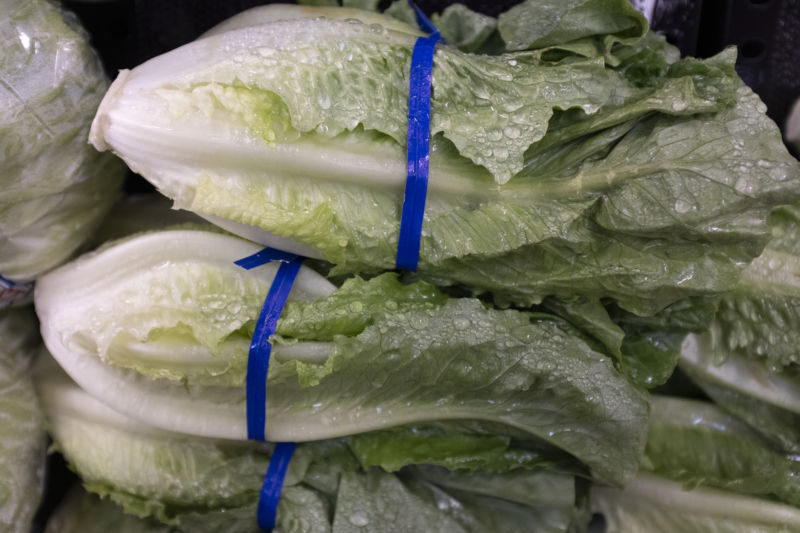Lettuce of the damned –
Of 67 sickened, 39 hospitalized and six have a life-threatening condition.

Enlarge/Romaine lettuce can be seen at a store in Mountain View, California, United States, on Friday, November 22, 2019.
An outbreak of potentially life -threateningE. coliinfections linked to contaminated romaine lettuce has widened to 67 cases in 19 states, with 39 of those cases leading to hospitalizations, according to the latest figures from the Centers for Disease Control and Prevention.
No deaths have been reported in the outbreak so far, but six cases have progressed tohemolytic-uremic syndrome, a life-threatening disorder brought on when toxic substances made by an infection destroy red blood cells and damage the kidneys.
The widespread outbreak linked to romaine around Thanksgiving will likely give many consumers an unpleasant sense of déjà vu.About this time last year, the CDC warned consumers to put down their holiday salads as another romaine-linked outbreak struck. When it was declared over in January, the agency hadtallied 62 cases, including 25 hospitalizations across 16 states.
That fall 2018 outbreak was preceded bya massive and deadly onethat stretched from March to June of 2018. The outbreak was traced to romaine lettuce grown in the Yuma region of Arizona. Health investigators later suggested it was caused bymanure from a high-density cattle farmtainting canal water used for irrigation. In all,210 people were sickened in 36 statesduring the outbreak. Of those cases, 96 were hospitalized and five people died.
The current outbreak has been linked to romaine grown in Salinas, California — the country’s other large lettuce-growing region besides Yuma. The CDC advises consumers and retailers not to eat, sell, or serve any romaine grown in the region. If you’re unsure if any romaine you come across was grown in Salinas, toss it and don’t chance it, the CDC says.
Like in other outbreaks, the contaminant in this case is a pathogenicE. Coli,Escherichia coli(serotype O) : H7,to be precise. WhileE. colibacteria are, on their own, harmless intestinal residents, strains that have picked up disease-causing toxins and other virulence factors from other bacteria become disease-causing themselves.
E.(coli) **************************** (O) : H7 is one of several strains that carry disease-causing Shiga toxins swapped from the bacteriaShigella dysenteriae. It is the most common Shiga-toxin-carryingE. colito infect humans in the US — and many other places. The main source of this monstrous microbe is the intestines of animals, mainly cattle.
So far, it’s unclear howE. coliO 157: H7 made its way onto lettuce in Salinas this time. According to a report in The Washington Post, farmers and health investigators are looking into breakdowns in water testing and sanitizing methods. They’re also looking into seasonal factors that could explain the outbreaks, such as cows shedding moreE. coliO 157: H7 during the fall or nearby fields being prepped for spring crops with applications of manure.






GIPHY App Key not set. Please check settings